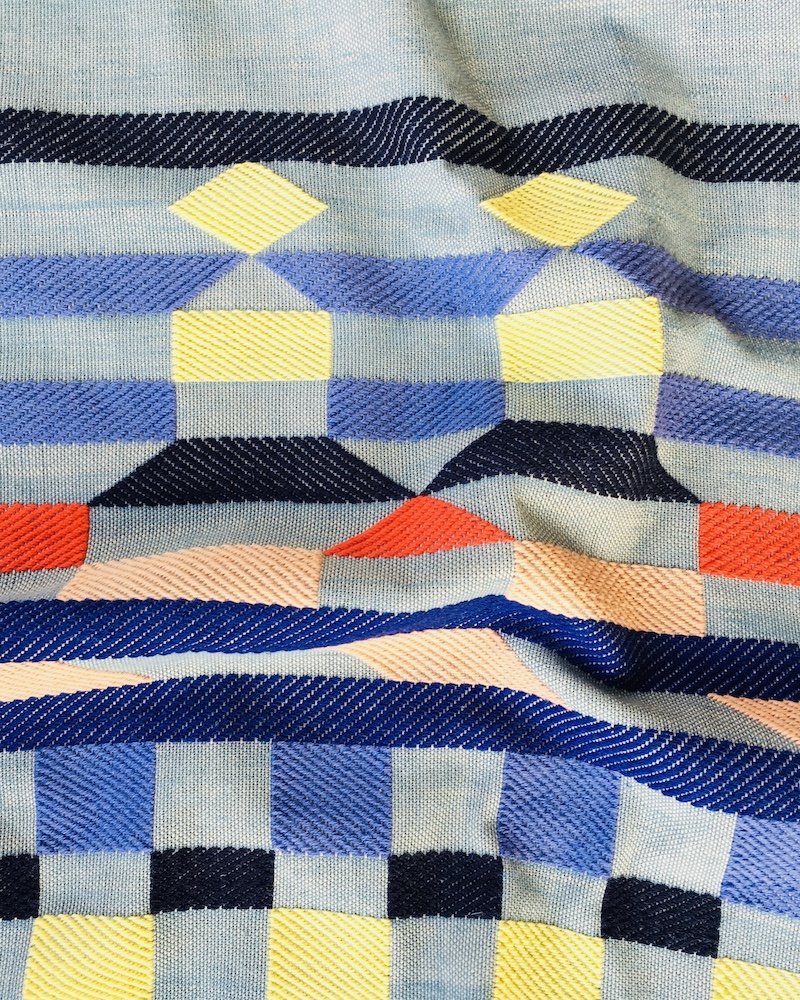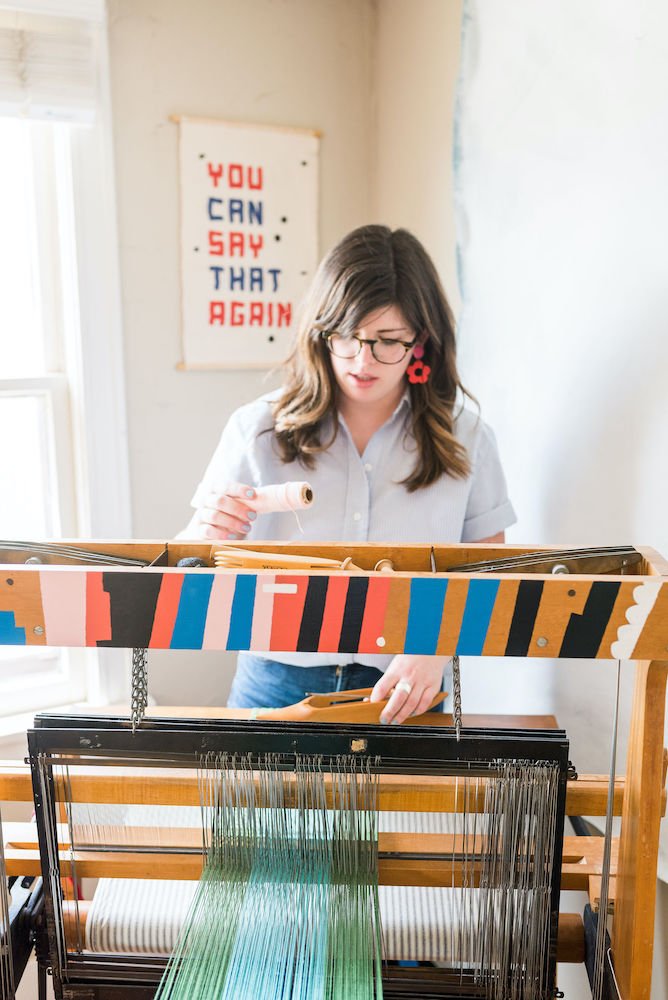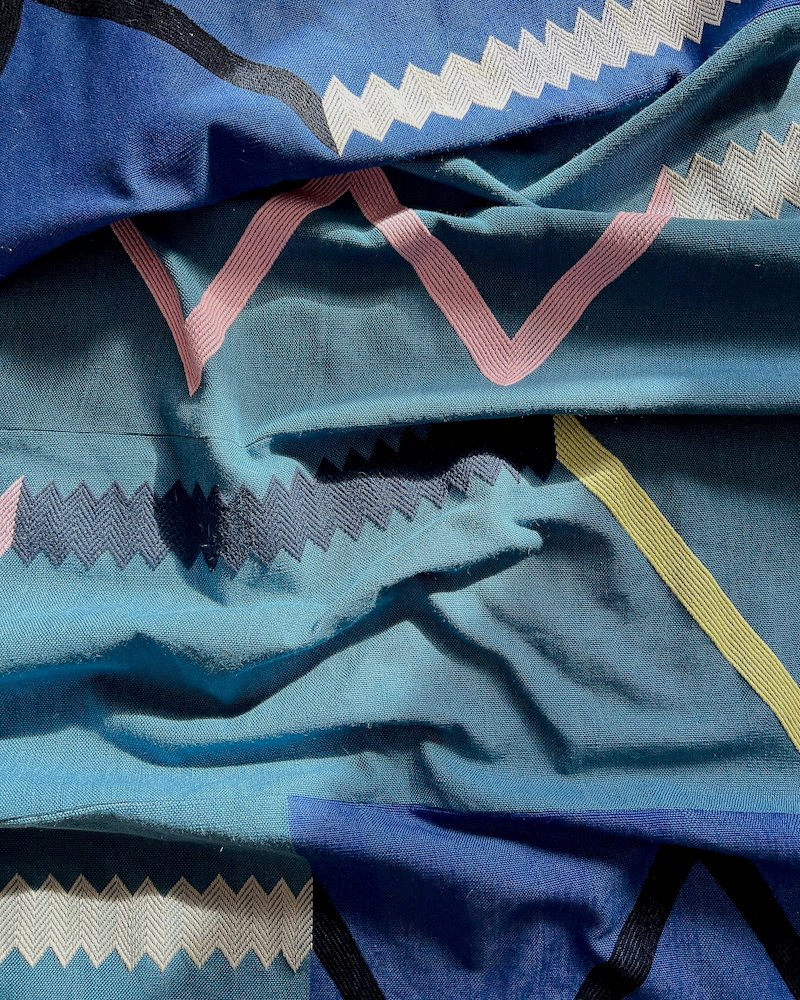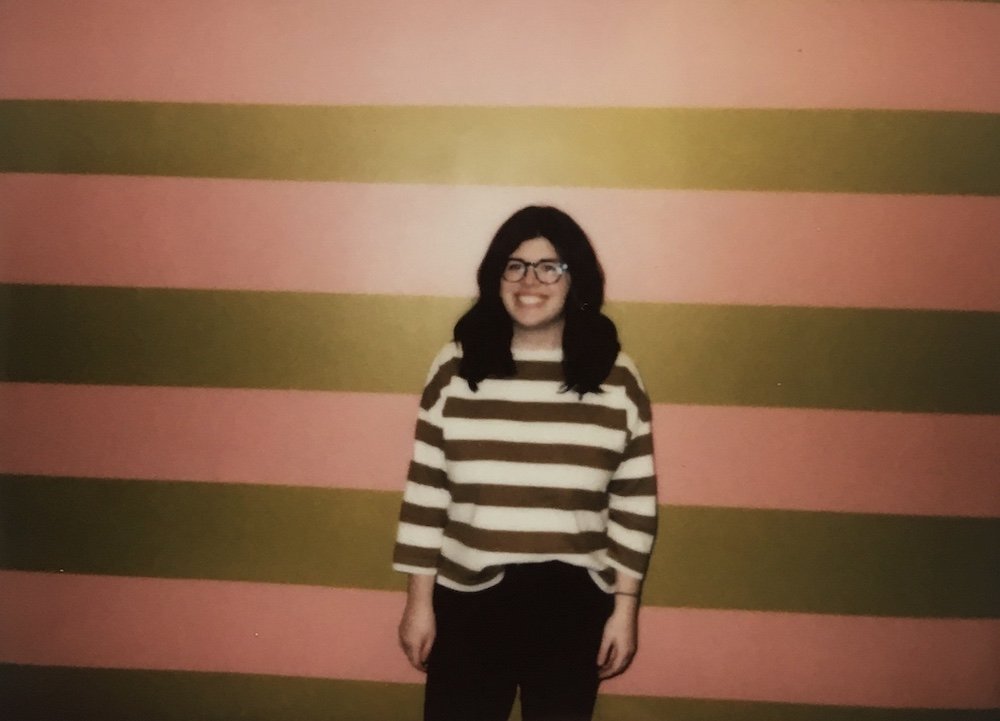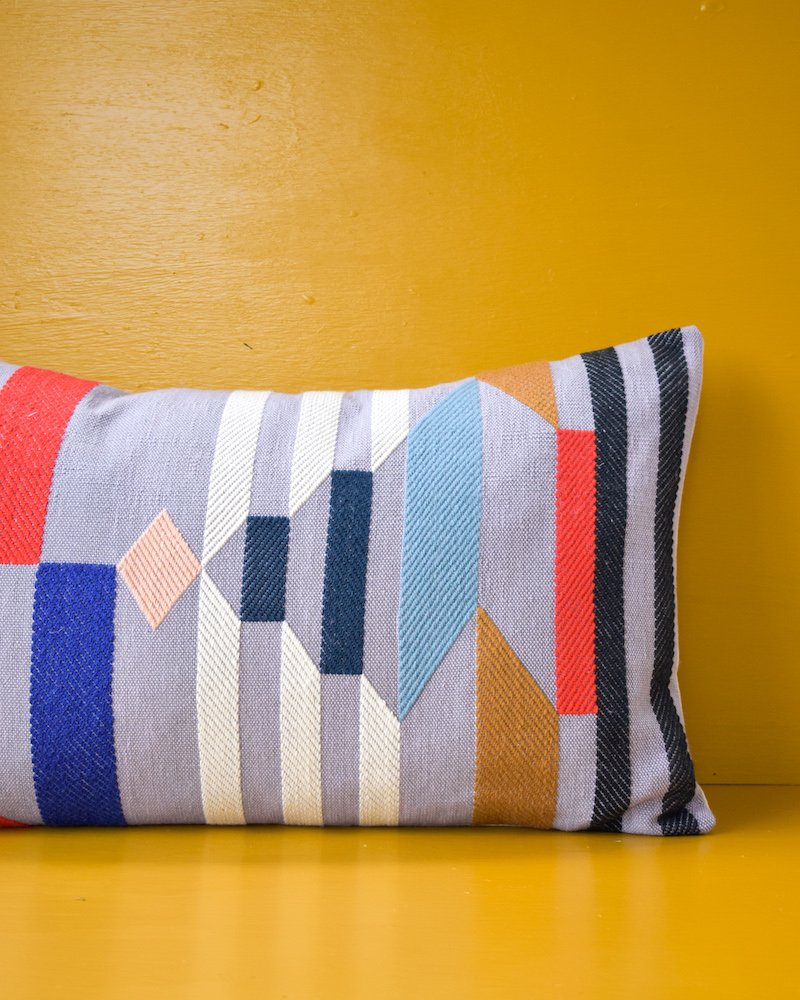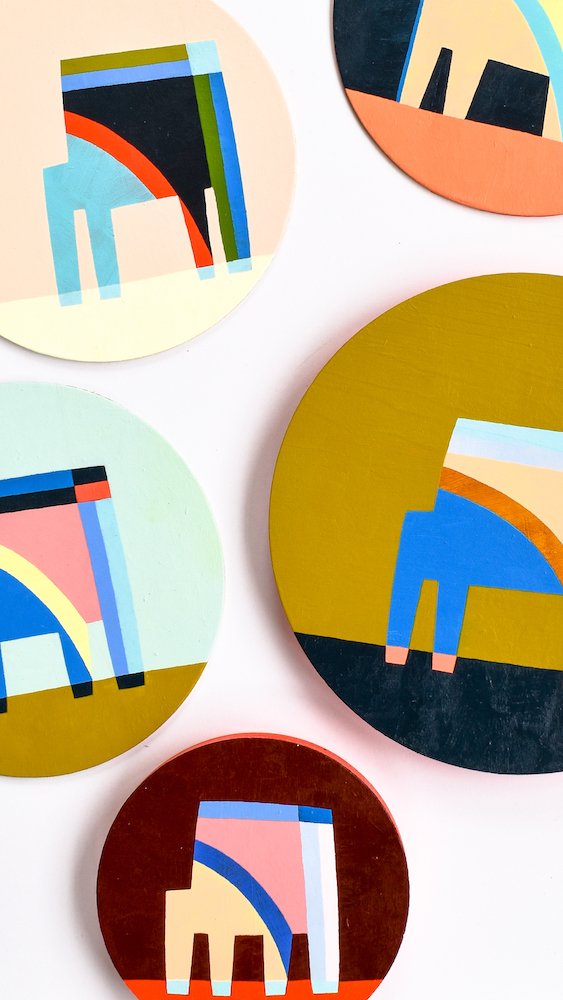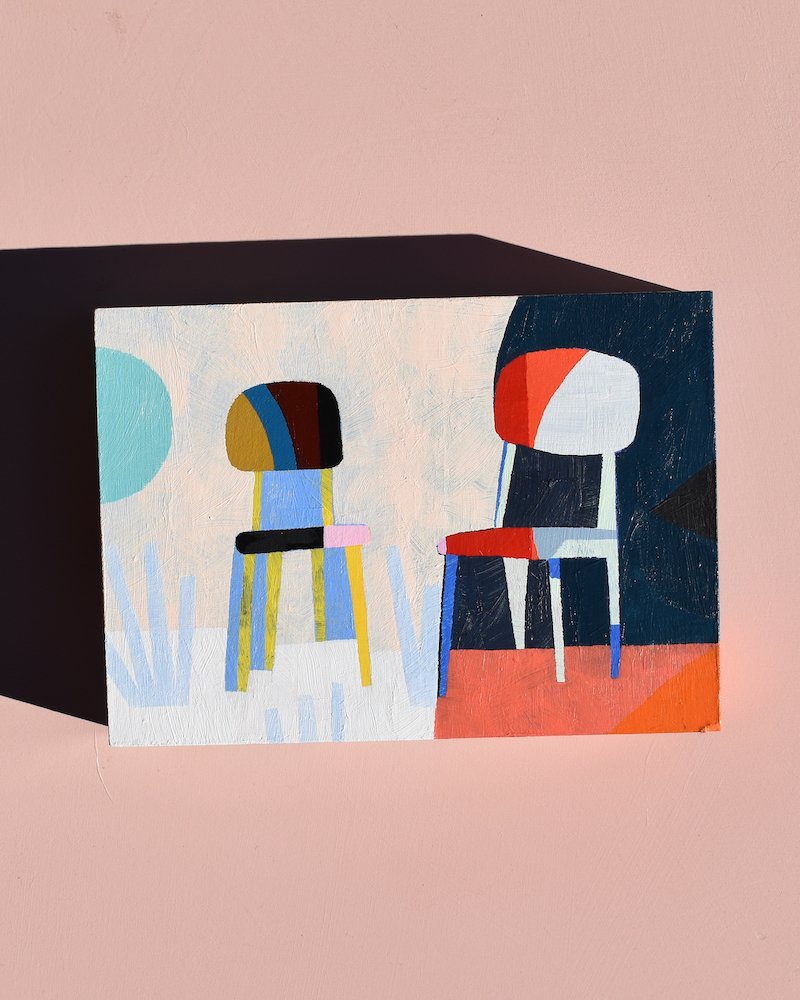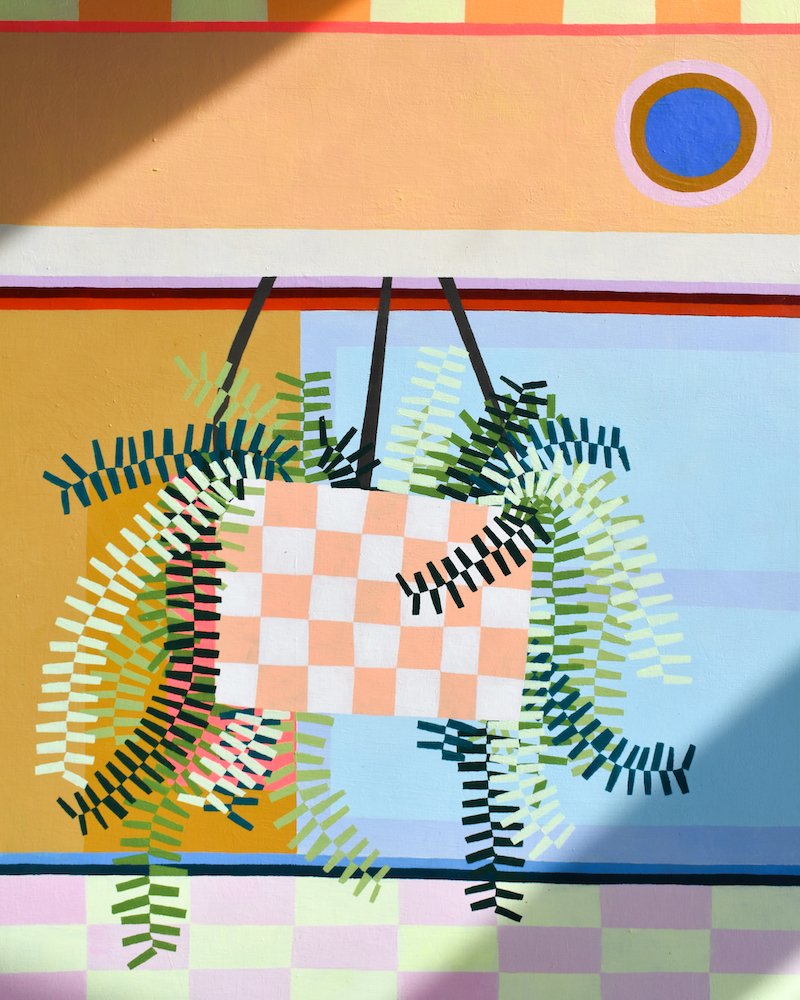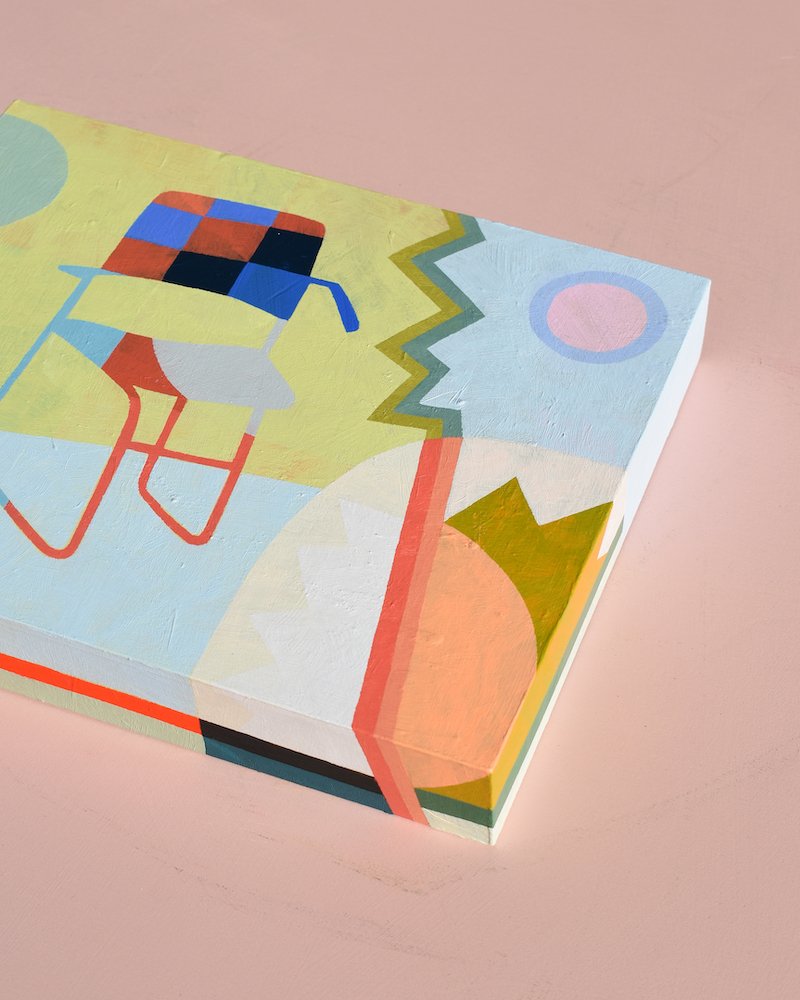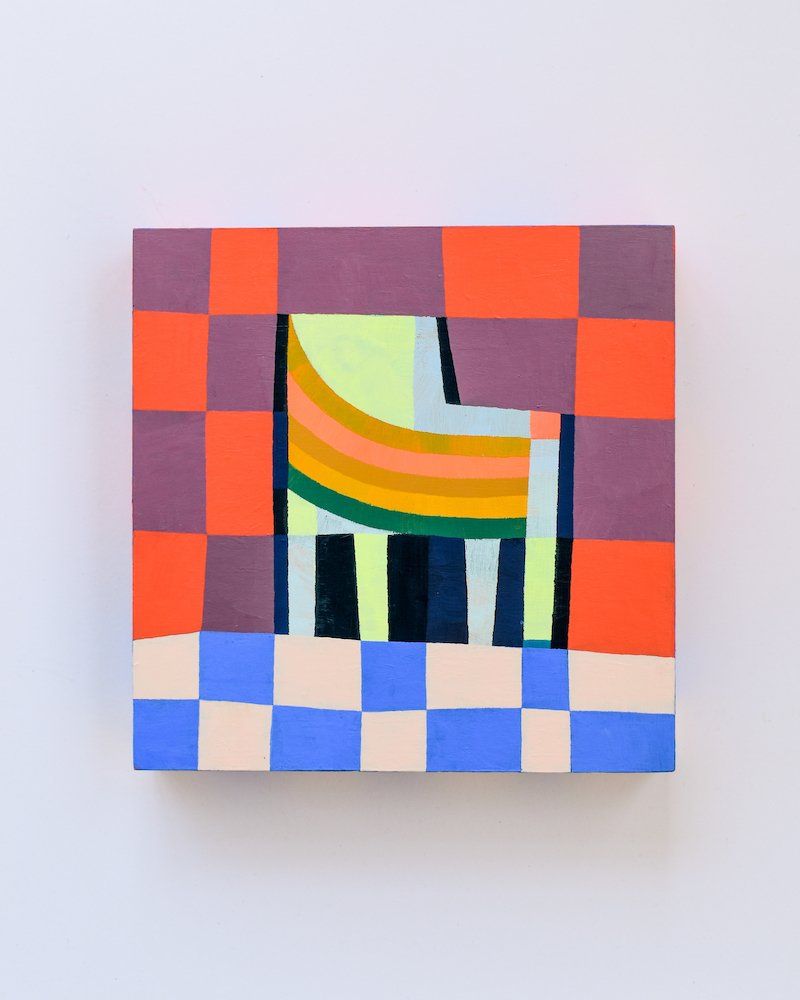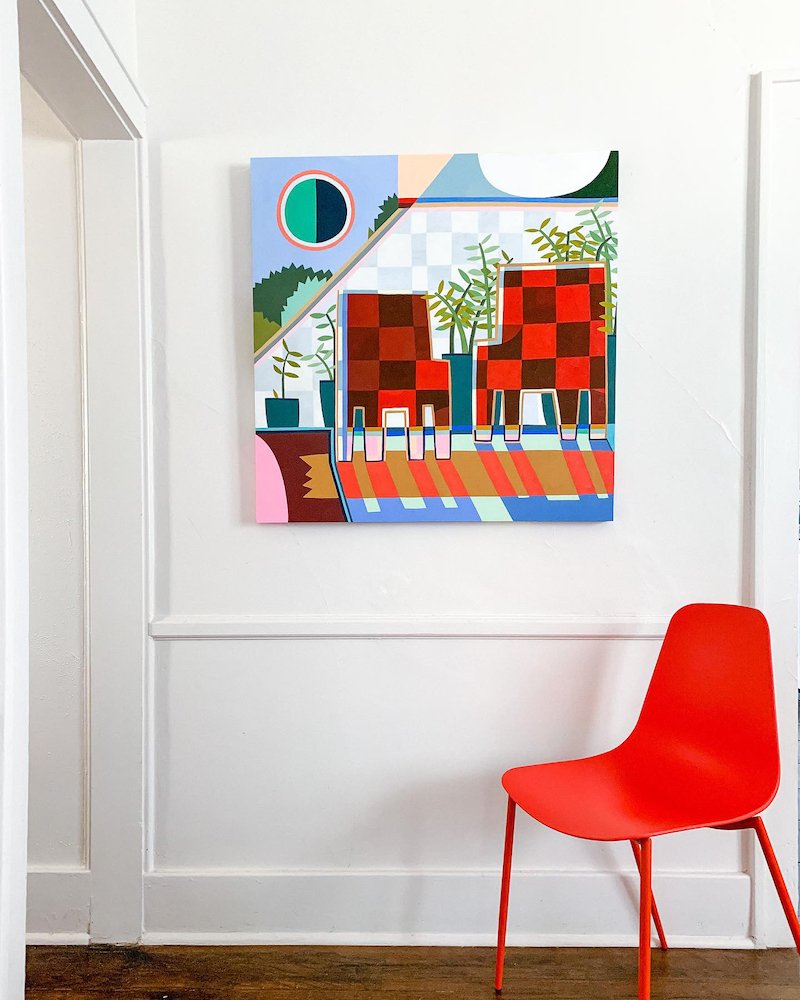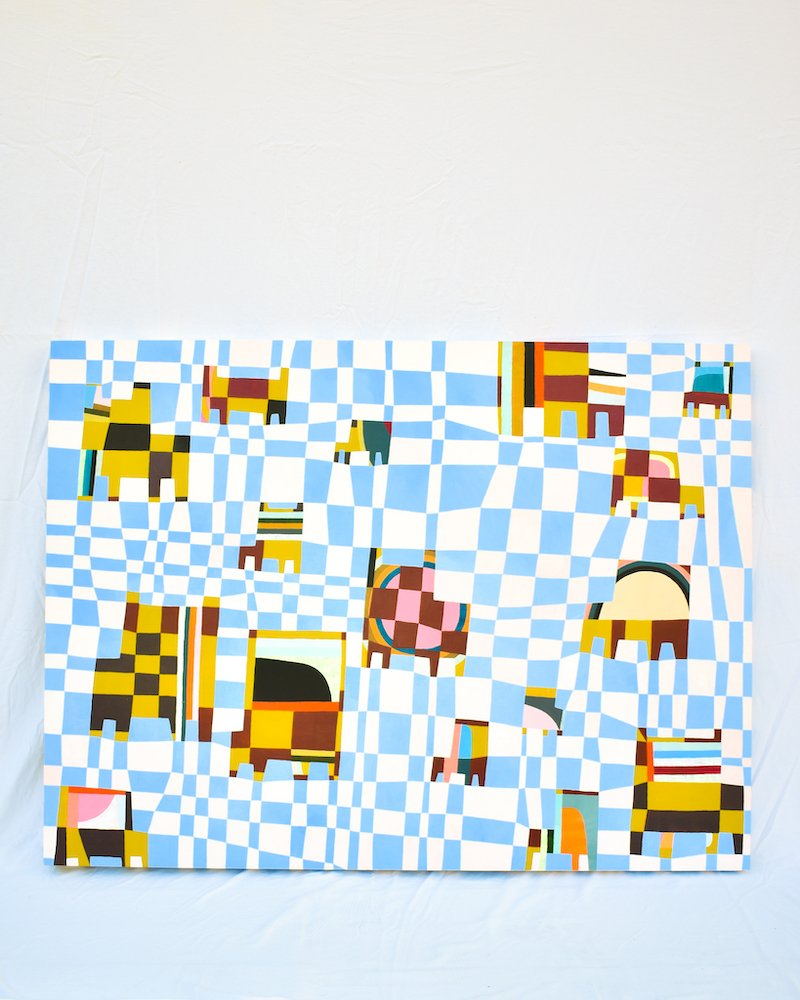Artist Interview: Sarah Sullivan Sherrod
Sully and I worked together to create a contemporary embroidery sampler combining Sully’s color and shape sensibilities with my embroidery experience and textural explorations. The end result is a hybrid work of art that plays to each of our strengths exploring shape, color, texture, and line. It blurs, if not completely erases, the line between Craft and Fine Art. Through our extra special pattern, Sully and I invite you into our collaboration and hope you can explore your own creativity while practicing a series of embroidery techniques and creating a work of contemporary art.
An Interview with Sarah Sullivan Sherrod
Sarah Sullivan Sherrod - aka SULLY - is an Oklahoma-based fiber artist, muralist, and everything in between. A self-proclaimed “dreamweaver and rugrat,” Sherrod aims to celebrate the wonder of everyday things we might overlook - chairs, nature, feelings - through the power and endless possibilities of color.
You are a multi-talented artist working with different materials ranging from paint to fibers. Did these seemingly separate avenues of creating develop simultaneously or did one come before the other? What inspires you about your various chosen materials?
Painting has always been in my life, simply because it was accessible as a kid in art class. I didn’t even realize “Textiles” was an option to study until college. I went to KU for graphic design, but became increasingly attracted to the tactility of fibers and its wider allowance for the unexpected, which can create so much personality. Weaving, and the grid of the loom, worked especially well for my design brain and my love for wonkiness in art. I bought myself a loom from the local arts center, and a decade later I’m still at it. I started making handwoven pillows and tapestries as my business, with painting as my personal creative outlet. Eventually, as I shared more of what I was painting, it all just kinda jumbled together. Cut to 2022 where I’m experimenting with painting on weavings. It was bound to happen at some point!
As someone who likes to have multiple things going on at once, I enjoy moving back-and-forth between such different mediums. I go to painting when I want more immediate gratification, an easy curve, a specific color in my brain, or the option for more depth. But paintings are harder to know when to stop, so I love weaving when I kinda want stricter parameters to work in. It feels like a puzzle I’m putting together. And there’s just a literal coziness that comes with working with cotton and wool and knowing I could wrap it around me if I wanted to. This isn’t always the case, but I guess you can say I find more risk in painting and comfort in weaving. Maybe that’s why it’s taken me so long to finally combine the two...
Outside of the materials themselves, how is your creative process different when it comes to painting vs. weaving? Do you have to think through and plan your pieces differently and how might that affect the end result?
There are two ways in which the process for both is similar:
1) All projects first and foremost are about the color, no matter the material. Color is what I want talk about always. Most projects start with a color I want to explore and then I build color relationships around it. I like the conversation that happens there, which leads me to...
2) I plan very, very little. I think people are often surprised by that since my work has a relatively “clean” look. But most pieces, outside of very specific commissions, are about 90% improvisation. I maybe write down a vague color palette and draw a couple shapes. That goes for both paintings and weavings.
From there, the process differences between the two are relatively obvious due to material limitations. I can layer and edit so much more with painting, so there’s more option to say “ehhh, maybe let’s change that.” With weaving, I have to make a confident decision and just lean into it because boy do I hate undoing anything on a loom.
I really admire your ability to flow between abstraction and stylized representation in your paintings. Where do you find inspiration for your work? Do the abstract pieces contain specific symbolism for you or are they more formal explorations of shape and color?
Thank you! It’s all absolutely exploration of shape and color, specifically the relationships colors make with each other. The object really is just a vehicle for playing with color. Most paintings that have “things” in them are commissions, and I welcome the challenge to figure out what my version of that looks like.
My favorite genre in all art - film, writing, music - is anything that uses creative license to bend reality a little bit. That’s the fun of fiction! Anytime I’m painting a scene of some sort, I don’t mind that the chair legs wouldn’t work in real life or the shadow makes no sense. That’s not the story I’m telling. The real story is the color and how you feel about it.*
*sidenote, wow, learning a lot about myself in this interview!
What is something you are feeling really excited about in the studio these days?
I spent a lot of January studying, assessing, and questioning. It was very informative. Asking myself things like “why do I like this piece?” or “why don’t I like this piece and how would I change it?” I have a whole list of questions to ask myself written on a board in my studio, along with lists of ideas and mottos to remember.
Now, I’m ready to internalize all of that rational thought but let my flow-state brain take over and see what comes of it. Kinda like getting out of my brain but also deeper into it? I’m excited by experimentation, combining my various materials, and scaling up. Things might get weird in 2022.
You also paint murals. Is it challenging to shift the scale of your work so dramatically from easel to entire wall?
The scale isn’t so much the issue. Turns out I’m strangely adept at spacial reasoning, more than I would have previously ascribed to myself. I think that might be my secret to improvisation that looks really intentional.
The trickier thing is, again, the concept planning. I don’t get as jazzed about that part. But most murals are for clients and they want to know what they’re getting into. It’s higher-stakes than a typical painting commission, so the draft needs to be more realized. And because of the scale of the project, clients are more risk-averse, especially when it’s a public business. But I’ve been fortunate to have a few murals where I was given a pretty blank slate to do what I want and those are all-around the most successful.
Is your creative work your primary work? What does a typical day in the studio look like? (If not, how do you balance your studio practice with other employment?
Way back in nobody’s favorite month, March 2020, I was laid off from my part-time job. I took it as an opportunity to really focus on my creative work full-time. The following two years brought a lot of change in a million ways for everyone, but I also got married and moved my home/studio. I went from balancing multiple jobs and a social life to quietly working alone in my studio in quarantine to co-existing with another human being and working within that space.
Now that I’m getting settled in my studio, which is the upstairs of my house, I’m starting to find my rhythm again. A typical day starts with emails and any admin stuff. And then work pretty much until dark. Sometimes that means painting in the morning and weaving in the afternoon. Sometimes it’s weaving while paint dries and moving back-and-forth. Our upstairs is two rooms, so it’s sort of arranged as a “dry” studio for textiles and a “wet” studio for anything that’s gonna make more of a mess. And I like to take my work into the backyard as much as I can. That’s the dream schedule, anyway, but of course that gets interrupted by all the other aspects of running a business!
Do you have any tips or words of encouragement for artists just starting out?
Oh, wow. So much.
Make sure you have projects that are exclusively for you, that may never been seen by anyone else. The freedom in doing that is good for your brain and often feeds into your public work in surprising ways. And ironically, if you ever do share it with the world, it’ll likely be their favorite thing you’ve done because you were vulnerable and put so much of yourself into it. Sometimes I’ll have a personal painting that I’m working on, but it’s also hard to work in the same medium as I’ve been in all day. When your job is a hobby for most people, what’s your creative outlet? Music? Writing? Mine is home renovation and gardening (or sitting around waiting for the weather to warm up). And now all I want to paint is chairs and plants.
Another big thing early on was figuring out what makes up my individual style. I don’t like to make the same thing twice and I deal in multiple mediums, so this is a constant question. I also want to evolve and not feel like anyone has me “figured out.” So for me, my constants are the way I combine color, how I paint lines, and my go-to weaving technique. Those are open enough that I still feel lots of room to explore within that. And maybe that will all change someday!
Being an artist requires a certain amount of ego, so what’s the point-of-view that you specifically want to share with the world? When you first start out, it’s easy to just say yes and do whatever the client wants because you’re grateful for the opportunity. But you can lose sight of yourself in that. Whenever I feel bogged down by a commission project, I remind myself “they asked ME for a reason.”
Also, have good email etiquette. And learn what makes a good photo.
Who are some of your favorite artists (contemporary or historic)?
This is gonna be a lot!
Historic: Anni Albers (and husband Josef), pretty much all of the Bauhaus. All of the Fauves. Dadaists. Stuart Davis. Joan Miro, Alexander Calder, Wassily Kandinsky, Alex Katz. Pretty much anyone that seems like they were having fun with it all. I just saw the Sophie Taeuber-Arp show in NYC and that blew my mind. And a few years ago I saw some Paul Klee paintings that I swear had never seen before but they looked very in-line with what I was up to at the time.
Contemporary: Sara Matson Westover, Wendeline Matson, Eric Sall, Rachel Hayes, Andy Arkley, Julie Alpert, Krista Jo Mustain, Alex Waggoner, Jackson Joyce, Julian Glander, Caroline Kaufman, George Wylesol, Madeline Gallucci, Chiaozza, Ellen Rutt Kristen Texiera…I could go on forever. I feel like I discover someone new and amazing every day. I know social media is our downfall, but it’s a pretty nice community for me. I’ve discovered so many artists on Instagram that I love (including you!).
Where can we find you online and how do folks stay in touch about new work/commissions/projects/etc.?
all social media, but mostly instagram: @sullysherrod
and more info and contact forms at www.sullysherrod.com or just email sully@sullysherrod.com!







